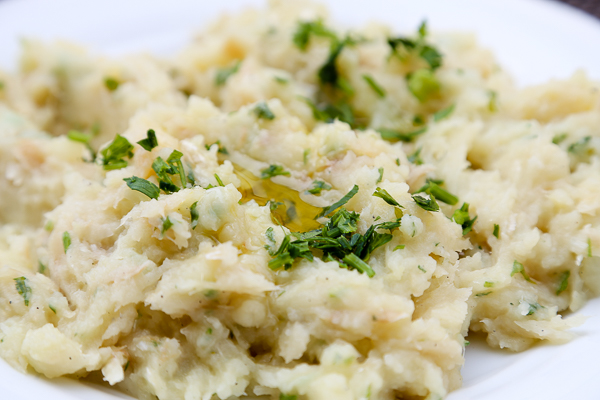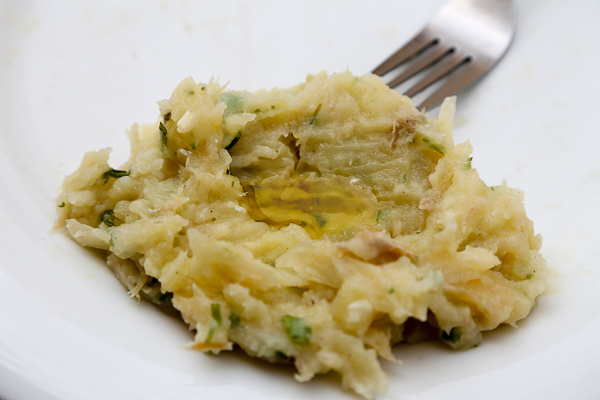
We could have easily spent a week or more at Split with its abundance of day-trip options, including numerous UNESCO World Heritage Sites, national parks and a charming ensemble of Adriatic islands. Three days were certainly not enough when every choice seemed equally attractive.

While we could have picked the emerald waterfalls of Krka National Park or the historic island of Hvar, we adopted the sensible plan to visit all four UNESCO World Heritage Sites along this central stretch of the Dalmatian coastline, making our way from Split to Trogir, Šibenik and finally Zadar.

With all four cities conveniently linked by highway buses, we gave up the rental car and traveled spot-to-spot by bus and ferry, eventually arriving at Zadar on our third day where we would pick up a car for the upcoming long drive towards Istria. And it would all start with charming little Trogir.

Largely overshadowed by neighbouring Split as a tourist destination, the island city of Trogir is among the most impressive Venetian maritime strongholds in Dalmatia along with world-famous Dubrovnik and Kotor, only with a small fraction of the visitors.

Over 2000 years of successive developments by Greek colonists to Roman and Venetian overlords have resulted in an impressive concentraion of historic architecture for a diminutive island barely 500m in length. Here scenes of the Nativity embellish the Cathedral's main portal, handcrafted by the town's favorite son Radovan and considered the finest work of Romanesque sculpture in Croatia.

Started in the 13th century and unfinished for another few hundred years, the Romanesque-Gothic Cathedral of St. Lawrence witnessed multiple evolutions in architectural styles that led to its unique combination of a Romanesque baptistry, Gothic rose windows and Renaissance ornaments.

Trogir's unique mishmash of Romanesque churches, Venetian Gothic windows and Renaissance palaces can be best appreciated from the Cathedral's bell tower, offering panoramas of its historic harbour and across the narrow channel to the adjacent large island of Ciovo.

Getting lost within Trogir's maze of cobblestone alleys seemed compulsory for every first time visitor, under constant distraction by its miscellany of little shops flaunting summery linen dresses and handcrafted jewelry. More bargains could be found at the Green Market across the bridge where lavender extracts and other local souvenirs were relatively cheaper compared with Split.

The 15th century bastion of Kamerlengo offers a different panorama from the western edge of Trogir, overlooking the petite island as a preserved medieval fortress that once functioned as an indispensable link in the chain of Venetian maritime defence along the Adriatic coastline from modern day Slovenia to Greece.

Last but not least, one of the best kept secrets about Trogir is the cheap sunset cruise back to Split in the form of the last scheduled ferry at 18:00, departing a small pier (see map) southeast of the Ciovo Bridge and coasting through the calm azure waters between the Adriatic islands and the Croatian mainland.

Split's glitzy waterfront promenade came back into view a little over an hour later, now becoming illuminated to the delight of the two dozen drunk college students on our ferry. This was our last evening in Split as we would take a 09:00 bus to Šibenik the next morning before continuing to Zadar in the afternoon.

The next day we arrived at Šibenik and allowed ourselves a short 4-hour window for left luggage, sightseeing, lunch and a little shopping before our 14:30 bus to Zadar. Fortunately our itinerary was straightforward with just two obligatory stops, starting with the UNESCO World Heritage Site known as Cathedral of St. James.

Conveniently situated 500m away from Šibenik's bus station, the 15th century cathedral is considered the important Renaissance architecture in Croatia with a spectacular baptistery and an octagonal dome fashioned after the Cathedral of Florence.

Priceless relief sculptures of the Twelve Apostles adorn the Western Portal crafted by Italian stonemasons at the height of Renaissance. In retrospect we could have spent more time at this underrated attraction, but our other unmissible stop awaited with even stricter hours of admission -- it's Bakalar Day at the jam-packed Buffet Šimun.
Restaurant Review: BUFFET ŠIMUN (Šibenik) (Location Map)

This is one of two restaurants out of a dozen in Dalmatia that stood heads and shoulders above everything else (the other being the magical Ficović). It was also the only occasion during our 22-day Balkan road trip where we were nearly turned away from a restaurant due to its extreme popularity.

A half-century-old institution here in Šibenik, Buffet Šimun is widely known among locals and tourists alike for its faithful rendering of Dalmatian classics, simmering fresh out of its homestyle kitchen and served to its regulars at blue collar prices. We knew the place would be packed on Fridays when the chefs show off their time-consuming recipes of reconstituted Bakalar, but it was near impossible to find two seats until two friendly Slovakian ladies invited us to share their table.
Once we found a place to sit though, everything came out perfectly beginning with this creamy Rizot od kozica with fresh, flavoursome Adriatic shrimps melting deliciously with grated cheese and risotto rice into a beautiful consistency. This was by far the tastiest -- and ironically the cheapest -- risotto we had along the Balkan coast from Montenegro to Istria.

And then this -- one of my most delicious memories of Dalmatia.
This signature dish is the reason why this family eatery gets packed every Friday. Gracing virtually every table was the traditional Dalmatian favorite of Bakalar bianco, a simple recipe of hand-shredded salted codfish mashed in with potatoes, minced garlic and of course, copious amounts of quality cold-pressed olive oil for the right consistency and irresistible aroma. Perhaps the most amazing part was the price of merely 60 Kuna, or 8 euros, for one of my favorite dishes in Croatia ... of any budget.

I could not refrain from drizzling more olive oil for that extra dose of Adriatic herbiness and velvety mouthfeel. To readers visiting Split and vicinity, plan to arrive on a Friday ideally before 11:00 for a shared table with its regular clientele. We arrived at about 11:50 and nearly gave up finding seats. You've now been warned.
Meal for Two Persons
| Bakalar bianco | 60 Kuna |
| Rizot od kozica | 57 Kuna |
| Bread x 2 | 4 Kuna |
| Bottle of Water | 25 Kuna |
| TOTAL | 146 Kuna (CAD$29.8) |
Somehow we still found 40 minutes for shopping at the open-air market despite our self-imposed four-hour window in Šibenik. With another hour I would have loved to scale the Barone Fortress for an unobstructed view of the old town, but we had a rental car to pick up at our next destination of Zadar.

Two hours later our bus arrived at Zadar's bus station where we were scheduled to pick up our rental car at 16:00, only to be foiled by the rental company's staff who had to make a hospital trip for some sort of emergency. So we switched up our plan and picked up water and grocery at the Konzum supermarket across the road, left our grocery with the car rental office then took a quick taxi to the far end of the Old Town, instantly recognizable by the unique monument known as Greeting to the Sun.

Consisting of more than 300 solar panels arranged into giant discs representing the sun and the eight planets, Greeting to the Sun not only stages a vibrant light show every evening, but also powers the LED street lights along Zadar's waterfront promenade.

The oldest city in Dalmatia brandishes its 21st century swagger with not one but two avant-garde monuments next to its medieval fortifications. Steps from the solar-powered light show is the popular Sea Organ, an audible installation consisting of a giant underground resonator actuated by crashing waves and attracting sunbathers of all ages to this unofficial public beach with smooth marble slabs instead of the typical Adriatic pebbles.

At the heart of the Old Town stands the most important pre-Romanesque architecture in Dalmatia, the 1200-year-old church of St. Donatus with its circular Frankish architecture from the same era as world-famous Aachen Cathedral, incorporating marble columns and slabs from the ancient Roman Forum on which it still sits.

Zadar's credential as a UNESCO World Heritage Site is best appreciated from the bell tower of its 13th century cathedral where the former island's Venetian fortifications -- several kilometres of medieval ramparts, crenellations and saltwater moats that frustrated the advance of the Ottoman Empire for centuries -- is revealed in its full glory. After the fortresses of Corfu, Kotor, Dubrovnik and Trogir above, this would be our last visit to a Venetian maritime stronghold on our 22-day journey along the Balkan riviera.

Our rental car was being readied as we slowly walked back to the bus station, the ailing staff now substituted by a young manager who upgraded our BMW 1-Series to an Audi A4 in the top trim, still keeping a diesel engine that would minimize our fuel cost over the next four days as we drove nearly 600 km from Zadar to Plitvice National Park to numerous Istrian hill towns before returning the car at Rovinj.
IF YOU GO
Trogir is located closer to Split Airport than Split itself, and Zadar has its own airport. Both airports are served by seasonal flights from Western Europe operated by low-cost airlines such as Easyjet and Ryanair. Once arrived at Split or Zadar, frequent highway buses easily connect between Split, Trogir, Sibenik and Zadar, in this order from east to west.
No comments:
Post a Comment